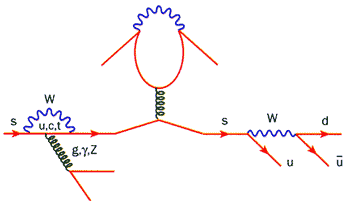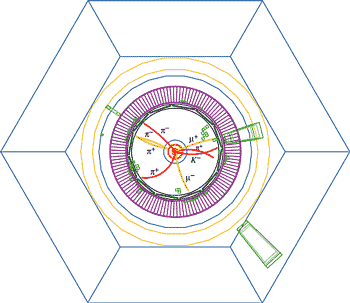| >>> | weblog context |
|
| home | site map | about context | lang >>> español | |
|
> interact with the digital world |
|
|
|
|
||||||||
|
|
|
|
|
|
beyond two cultures "Physics research of the 20th century has a daily impact on all of us, computers, nuclear power, atomic weapons, microchips, television, internet, video. However, the world of art has made little comment or reflection on this colossal change in culture. Perhaps this is because Science has not been seen as culture, but has remained cocooned as a difficult activity reserved for a small group of specialists and the artists have generally ignored it. A paradox has developed, societies are now largely defined by their scientific skill and yet the world of art, a mirror of society, has so far made little comment. The laws of physics are not going to go away. Although these laws are no longer intuitive - relativity, antimatter, quantum mechanics are how Nature works. Sooner or later the artist will have to confront the challenge of representing and commenting on these foundations of human life... *It is already clear that both cultures, the artists and the scientists, are researching and experimenting; using different tools certainly but united by curiosity and passion*. "Signatures of the Invisible" is showing that art and science can have thrilling cross-fertilisation if the necessary networks are set up to facilitate contact between researchers from different cultures." From *Signatures of the Invisible, CERN Press Release*
|
|
|
|
|
what do modern art and particle physics have in common? "Perhaps more than you might think. After all, they are both ways in which we attempt to represent and interpret the world around us. Often theories in physics are described as 'elegant' or 'beautiful', as if they are aesthetically pleasing in some way. And many concepts in physics, such as the Big Bang, antimatter or time itself, are so abstract that *to have any understanding of their meaning beyond the strict equations we must rely on metaphor and imagery*. Recent advances in physics have revolutionised our understanding of how the universe works, and perhaps even our place in it, so isn't it about time that the world of art had its say?" From *Physics meets art - the beginning of a beautiful friendship?*
|
|
|
|
|
physics meets art "Giant spinning tops, table tennis, and antimatter on stage have all graced the halls of CERN recently as part of the lab's stepped-up *effort to combat the public's declining interest in physics*. "After the end of World War I, it was clear that physics was the main interesting area. There's much clearer competition between the sciences these days," says Hans Hoffmann, a CERN scientist who is involved in outreach activities. The lab's public outreach is off to a flying start with a physics teaching conference and an art exhibition... The exhibition is about having people realize that there is intellectual value in things they don't understand, says Maurice Jacob, a theoretical physicist at CERN and one of the project's initiators." From *CERN Energetically Probes the Arts by Lynley Hargreaves*
|
|
|
|
|
artworks in exhibition Two years of exchanges and close collaboration between artist and scientists resulted in Signatures of the Invisible exhibition (at http://www.signatures.linst.ac.uk/framesetexp.htm): Time and Space by Roger Ackling The exhibition will re-open at Geneva's Centre d'Art Contemporain in January 2002 before travelling to venues in Stockholm, Lisbon, Paris, Strasbourg, Brussels, Tokyo, Australia (venue to be announced) and New York.
|
|
|
|
|
reviews CERN
project brings science and art together Art
And Atomic Physics Art
and science draw together by Edwin Cartlidge
|
|
|
|
|
|
|
|
:: source :: references :: grafik |
|
|
|
|
| home | site map | about context | lang > español | |
context weblog >>> http://straddle3.net/context

